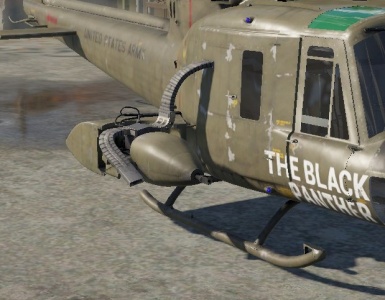Difference between revisions of "XM140 (30 mm)"
(→History: added history) (Tag: Visual edit) |
Inceptor57 (talk | contribs) (Undo revision 182684 by U137319744 (talk)) |
||
| Line 38: | Line 38: | ||
== History == | == History == | ||
| − | + | ''Examine the history of the creation and combat usage of the weapon in more detail than in the introduction. If the historical reference turns out to be too long, take it to a separate article, taking a link to the article about the weapon and adding a block "/ History" (example: <nowiki>https://wiki.warthunder.com/(Weapon-name)/History</nowiki>) and add a link to it here using the <code>main</code> template. Be sure to reference text and sources by using <code><nowiki><ref></ref></nowiki></code>, as well as adding them at the end of the article with <code><nowiki><references /></nowiki></code>.'' | |
| − | |||
| − | |||
| − | |||
| − | |||
| − | |||
| − | |||
| − | |||
| − | |||
| − | |||
== Media == | == Media == | ||
| Line 53: | Line 44: | ||
;Images | ;Images | ||
| − | <gallery mode="packed-hover" heights="200"> | + | <gallery mode="packed-hover" heights="200"> |
File:30 mm XM140.jpg|<small>XM140 on the UH-1C</small> | File:30 mm XM140.jpg|<small>XM140 on the UH-1C</small> | ||
</gallery> | </gallery> | ||
Latest revision as of 02:40, 11 March 2024
Contents
Description
The 30 mm XM140 is an American belt-fed externally-mounted helicopter autocannon.
Vehicles equipped with this weapon
- UH-1C XM-30 (Suspended)
General info
The XM140 and XM552 development started in 1963 as an option to satisfy the need for a high-penetrating gun for the Cobra attack helicopter. The XM140 is used on the UH-1C XM-30, a modified UH-1C, where two XM140 autocannons mounted in the fully flexible XM156/M156 universal mounts to create the XM-30 system.
Available ammunition
Describe the shells that are available for the weapon and their features and purpose. If it concerns autocannons or machine guns, write about different ammo belts and what is inside (which types of shells).
Comparison with analogues
- M230E-1 (30 mm): 30 mm American chain cannon found on the Apache, has access to a similar HEDP round but with better penetration and accuracy.
- M195 (20 mm): 20 mm American rotary cannon seen on the AH-1G attack helicopter, completes the same tasks as the XM140, but with 20 mm rounds and a way higher rate of fire.
Usage in battles
The cannon offers the pilot a versatile high power gun that can deal with lightly armoured targets including planes and other helicopters where the HEDP round can cause critical damage. Pilots may also be able to exploit the weak roof armour of some medium tanks as well as disable engines by penetrating the engine decks of heavy tanks or MBTs.
Pros and cons
Pros:
- The gun offers high versatility
- Accurate up to 1,000 m away
Cons:
- Mediocre penetration on medium tanks and MBTs
- Slow rate of fire
History
Examine the history of the creation and combat usage of the weapon in more detail than in the introduction. If the historical reference turns out to be too long, take it to a separate article, taking a link to the article about the weapon and adding a block "/ History" (example: https://wiki.warthunder.com/(Weapon-name)/History) and add a link to it here using the main template. Be sure to reference text and sources by using <ref></ref>, as well as adding them at the end of the article with <references />.
Media
- Images
See also
Links to the articles on the War Thunder Wiki that you think will be useful for the reader, for example:
- reference to the article about the variant of the cannon/machine gun;
- references to approximate analogues by other nations and research trees.
External links
Paste links to sources and external resources, such as:
- topic on the official game forum;
- other literature.
| USA aircraft cannons | |
|---|---|
| 20 mm | AN/M2 · Browning-Colt Mk12 Mod 0 · Browning-Colt Mk12 Mod 3 · FMC T-160 |
| M3 · M24A1 · M39 · M39A1 · M39A2 · M39A3 · M61A1 · M195 · M197 · Mk 11 · Mk 11 mod 5 · T31 | |
| 30 mm | M230E-1 · XM140 · GAU-8/A · GAU-13/A · LR30 |
| 37 mm | M4 · M9 · M10 |
| 40 mm | M75 · M129 |
| 75 mm | M10 · T13E1 |
| Foreign: | |
| 20 mm | Hispano 404 (France) · Hispano Mk.II (Britain) · MG 151 (Germany) · Type 99 Model 1 (Japan) |
| 30 mm | ADEN Mk.4 (Britain) |




